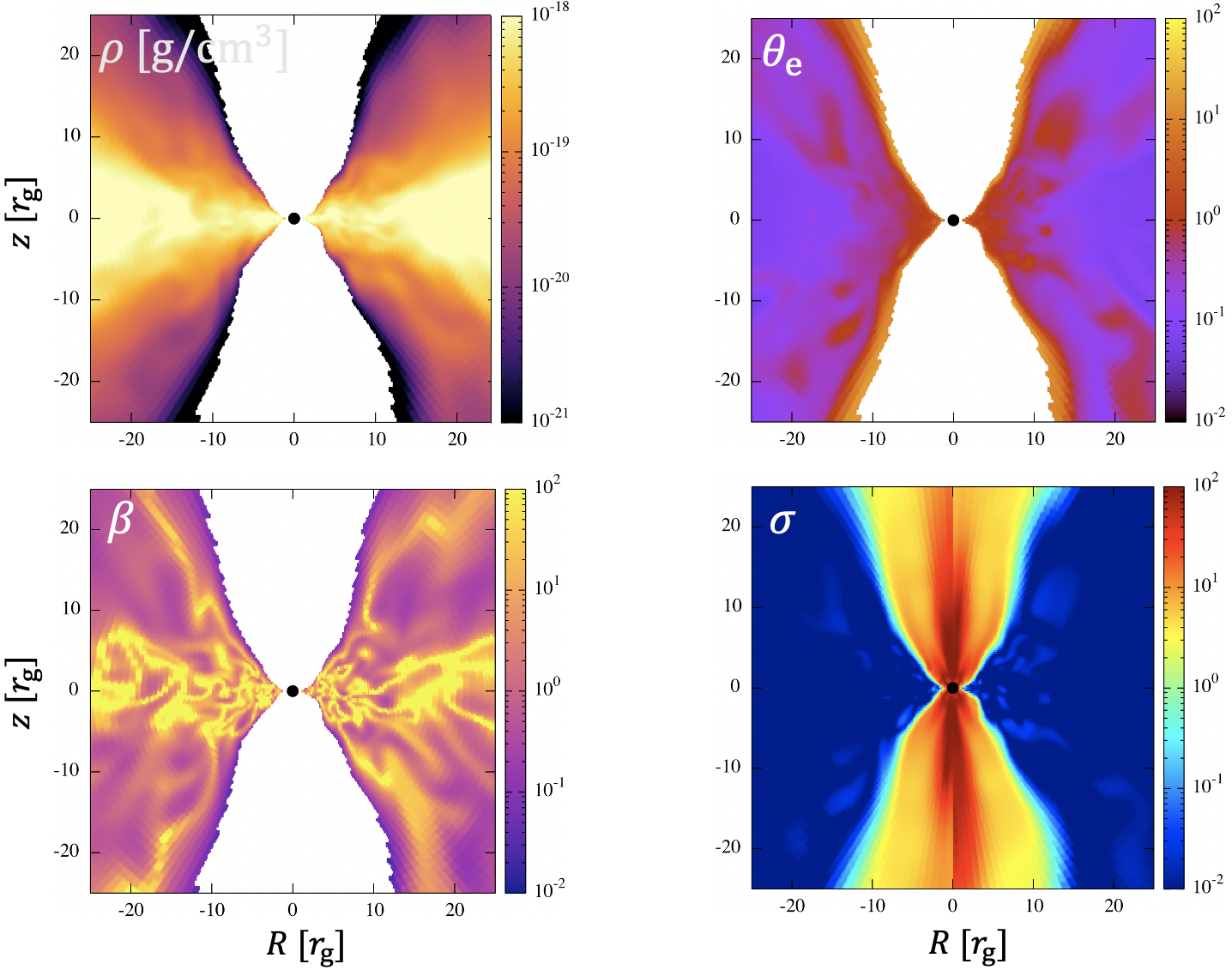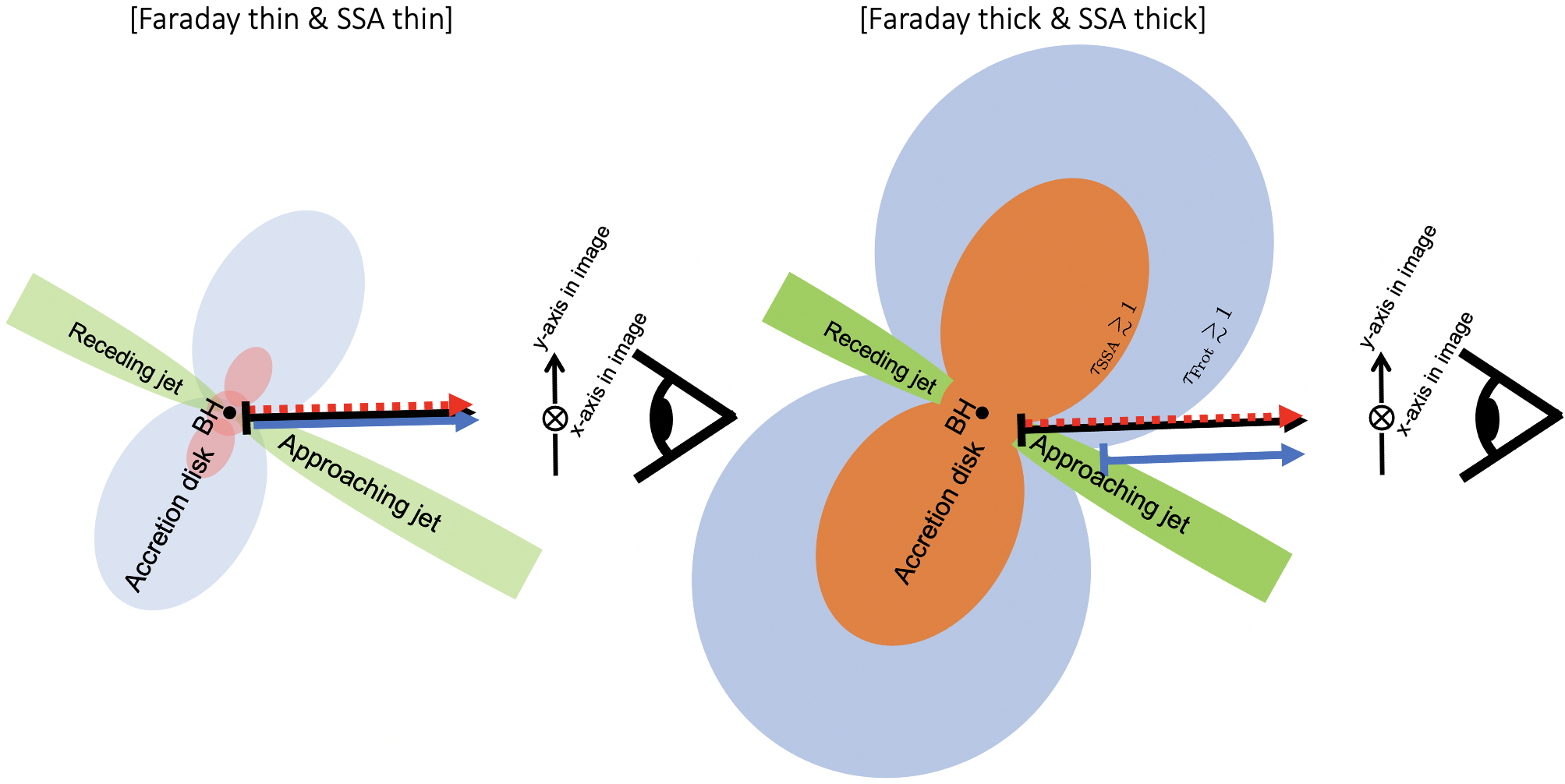研究成果・発表論文
Investigating the Disk-Jet Structure in M87 through Flux Separation in the Linear and Circular Polarization Images
Tsunetoe, Yuh, Mineshige, Shin, Kawashima, Tomohisa, Ohsuga, Ken, Akiyama, Kazunori, & Takahashi, Hiroyuki R.
要旨
For testing different electron temperature (T e) prescriptions in general relativistic magnetohydrodynamics (GRMHD) simulations through observations, we propose to utilize linear polarization (LP) and circular polarization (CP) images. We calculate the polarization images based on a semi-magnetically arrested disk GRMHD model for various T e parameters, bearing M87 in mind. We find an LP-CP separation in the images of the low-T e disk cases at 230GHz; namely, the LP flux mainly originates from downstream of the jet, and the CP flux comes from the counter-side jet, while the total intensity is maximum at the jet base. This can be understood as follows: although the LP flux is generated through synchrotron emission widely around the black hole, most of the LP flux from the jet base does not reach the observer, since it undergoes Faraday rotation ( ∝ Te-2 ) when passing through the outer cold disk and is thus depolarized. Hence, only the LP flux from the downstream (not passing the cold dense plasmas) can survive. Meanwhile, the CP flux is generated from the LP flux by Faraday conversion ( ∝ T e) in the inner hot region. Stronger CP flux is thus observed from the counter-side jet. Moreover, the LP-CP separation is more enhanced at a lower frequency, such as 86 GHz, but is rather weak at 43 GHz, since the media in the latter case is optically thick for synchrotron self-absorption so that all of the fluxes should come from the photosphere. The same is true for cases with higher mass accretion rates and/or larger inclination angles.








 Ja En
Ja En